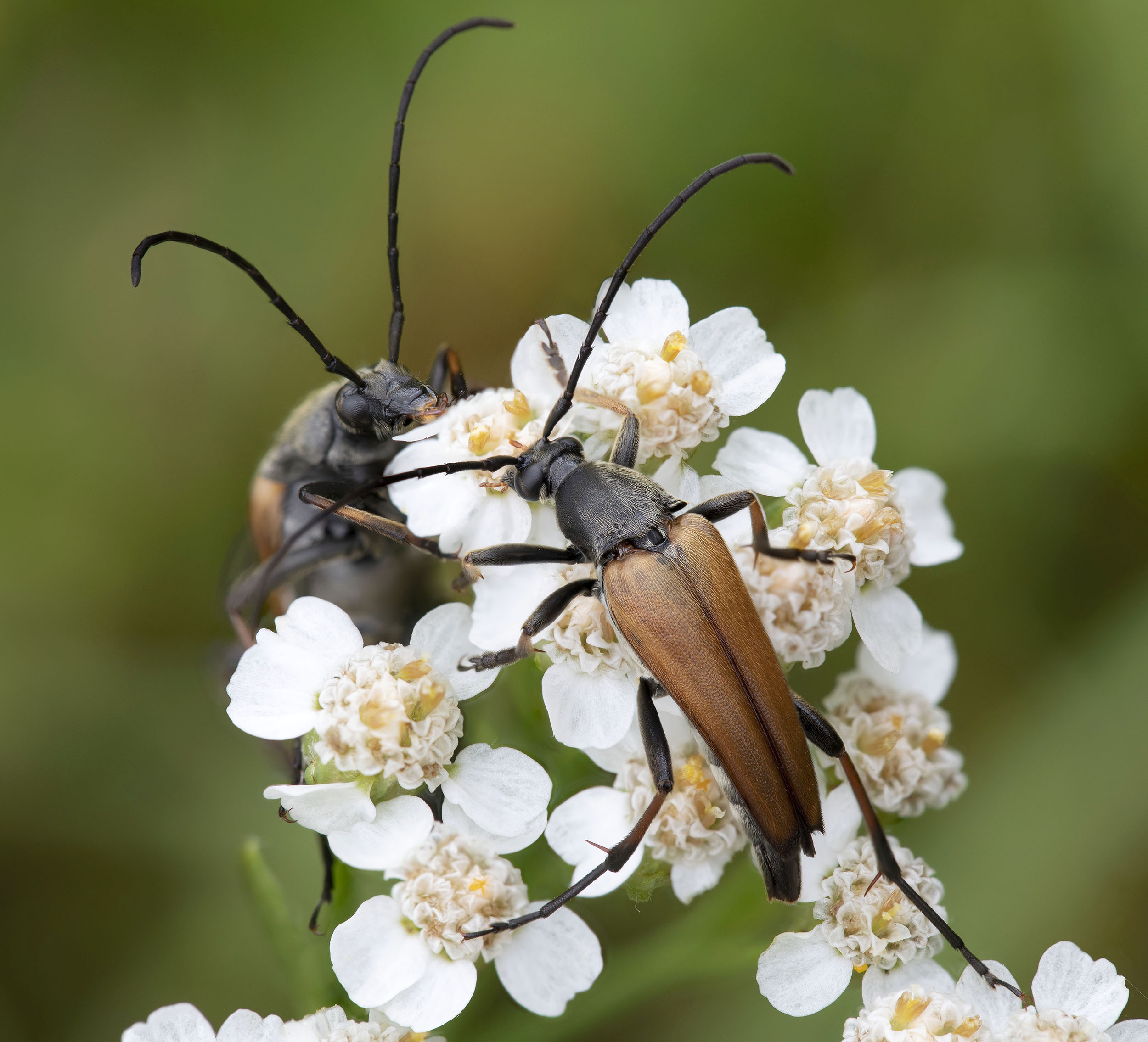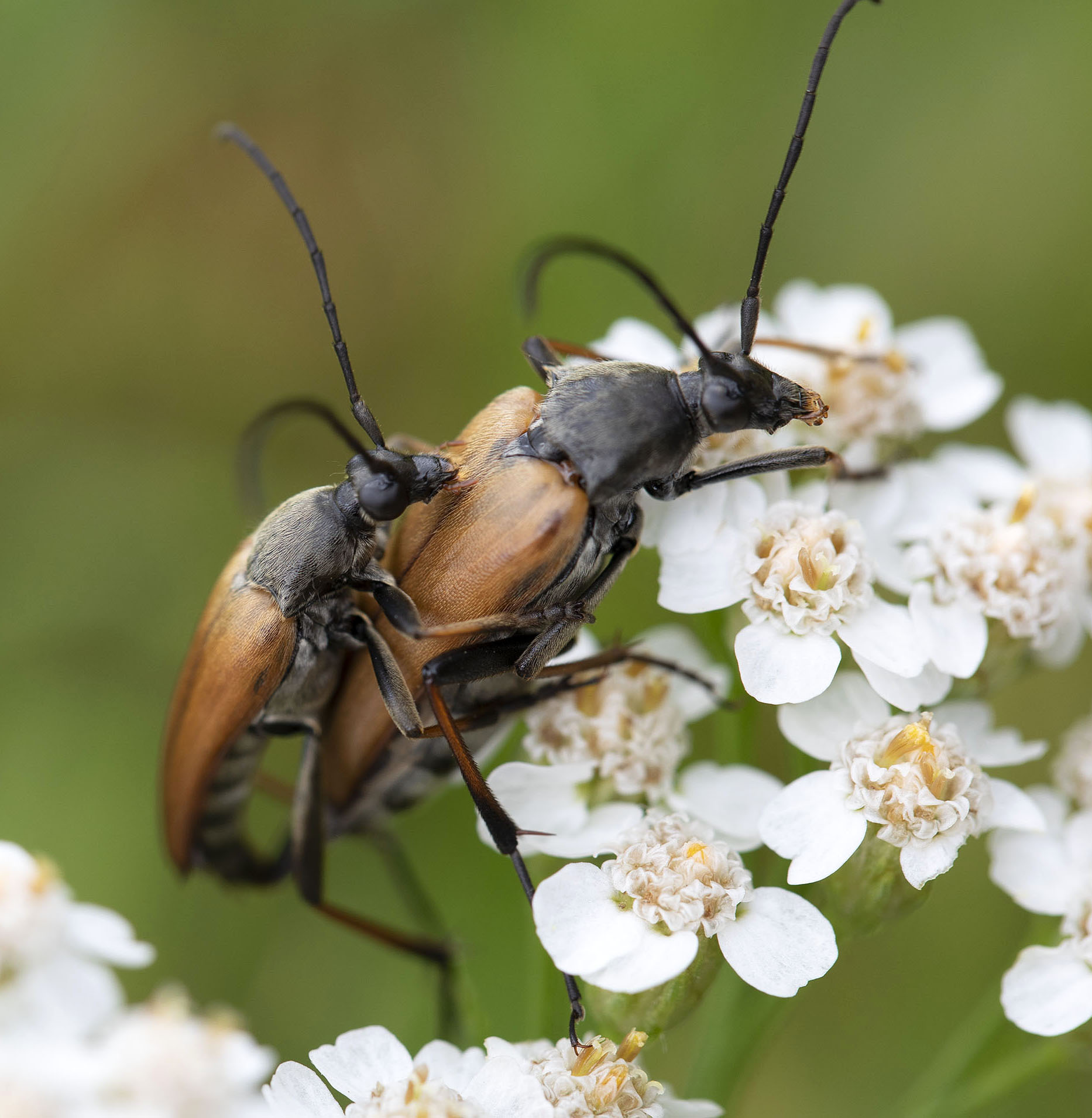
[Photo © Michal Hoskovec, 1999 / Fuji Provia 100 35 mm film scan]
|
Etorufus pubescens, an elegant flower visitor of preserved montane and submontane forests of Europe, has been described from Sweden as Leptura pubescens
by Johann Christian Fabricius in 1787 [▽]. The biology of the species is not completely known. The larvae were reported from moist, moderately decaying pine wood,
where they also pupate. Life cycle lasts three years. Adults, active from June to August, are diurnal and anthophilous [❖][✮][✳].
| Body length: | 12 - 16 mm |
| Life cycle: | 3 years |
| Adults in: | June - August |
| Host plant: | pine (Pinus spp.) |
| Distribution: | Spain, France, Italy, Slovenia, Croatia, Bosnia and Herzegovina, Serbia, Albania, Greece, Bulgaria, Romania, Austria, Switzerland, Germany,
Czechia, Slovakia, Poland, Norway, Sweden, Finland, Estonia, Litva, Latvia, Belarus, Ukraine, European Russia |
The depicted mounted beetles were collected on flowers (Apiaceae) in Spišská Nová Ves-Novoveská Huta environs (Spišská Nová Ves district,
Košice region, Slovakia) on July 21, 1992. The living speccimens were photographed in Aich-Assach environs (Liezen district, Styria, Austria) on July 3, 2022.
Collected by Michal Hoskovec and Daniel Rydzi
[▽]
Fabricius J.C.:
Mantissa insectorum sistens eorum species nuper detectas adiectis characteribus genericis, differentiis specificis, emendationibus, observationibus.
Proft, Hafniae, 1: 348pp [page 148], 1787.
[download  ] ]
[❖]
Sláma M.E.F.:
Tesaříkovití – Cerambycidae České republiky a Slovenské republiky / Cerambycidae of the Czech Republic and Slovak Republic.
Milan Sláma private printing, Krhanice, 383pp [pages 231-232], 1998 [ISBN: 80-238-2627-1].
[download  ] ]
[✮]
Danilevsky M.L.:
Longicorn beetles (Coleoptera, Cerambycoidea) of Russia and adjacent countries. Part 1.
Higher School Consulting, Moscow, 550pp [pages 294-295], 2014.
[download  ] ]
[✳]
Tamutis V. and Alekseev V.:
A survey of Lepturinae Latreille, 1802 (Coleoptera: Cerambycidae) of the south-eastern Baltic region (Lithuania and the Kaliningrad Region).
Biologija 66 (4): 169-235, 2020.
[download  ] ]
|








